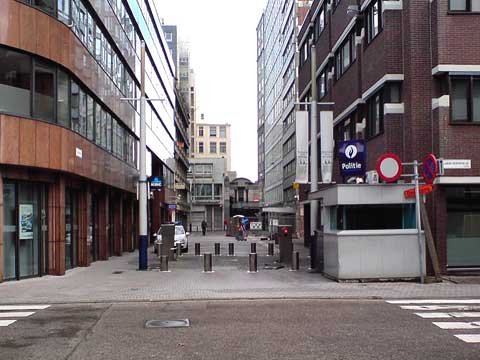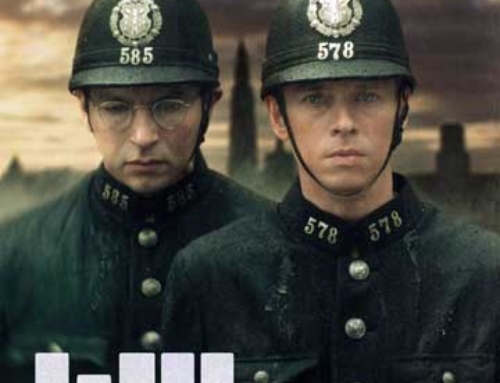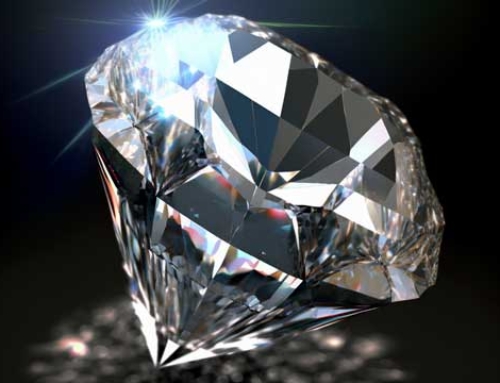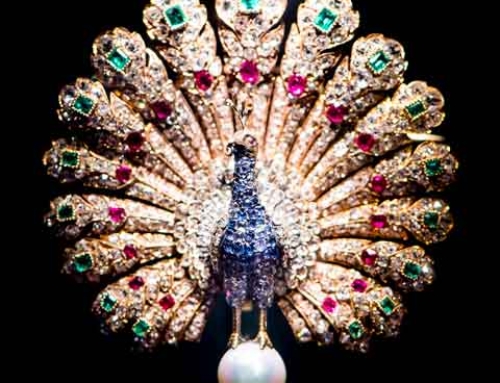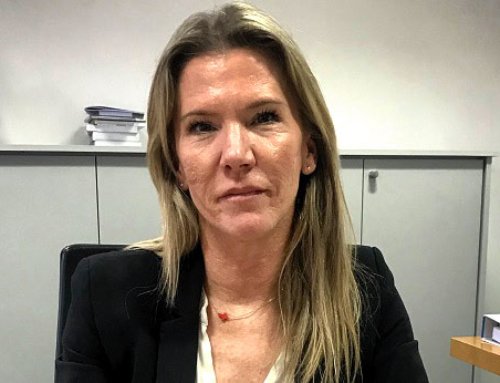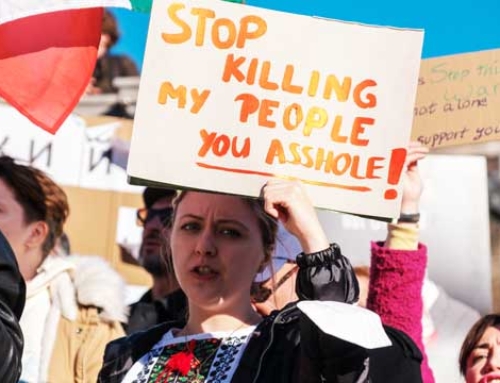Diamonds from Antwerp! Doesn’t that sound like glitter, luxury, glamour? If you turn into the Hoveniersstraat, right next to Antwerp’s cathedral-like Art Nouveau railway station, the impression couldn’t be more contrary: unadorned post-war buildings, some ten stories, everything between grey and beige, video cameras, a tiny synagogue squeezed in between.
A few figures, orthodox Jews, Indians, individual East Asians, an inconspicuous police patrol, stroll around unexcitedly. The Hoveniersstraat is the diamond centre of the city, which is the world centre of the diamond trade.
Moreover, there is no single exchange, but four of them. These are private clubs, and they have little in common with stock exchanges. For once, we are allowed to briefly enter one of the diamond exchanges, Antwerp’s Diamond Kring is its name. The large room with the worn out tables could also be the old clubhouse of a football club. Only unusual: the huge slanted window front to the north – so that you have as much natural light as possible without sun irritation. It is just lunch break. This is usually where merchants meet, inspect goods, do business with a handshake, according to old traditions. Jewish traders are still in the majority, but for years they have been losing market share to Indians and Chinese.
Diamonds from Antwerp – the business
Some 1,600 diamond companies operate in Antwerp: polishers, cutters, preparers, traders, wholesalers, jewellery designers, jewellers. 84 percent of the world’s rough diamonds are traded here (main producers: Russia ahead of Canada, Botswana and Congo). Only one in ten becomes jewellery, the others the industry needs: diamond is derived from the Greek adamas, in German: the indomitable. Diamonds are the hardest natural rock in the world. What can you cut everything with, even diamonds? Logical, only with diamonds.
Nearly 10,000 Orthodox Jews live in the “Schtetl at the Scheldt“, many are stranded here, fleeing from Eastern Europe in the 19th century, then from the Nazis, when they no longer got a ship passage overseas and hid. Multi-religious life has long been alive today. A snack lures to kosher pita, in the Jewish restaurant Hoffy’s also many Muslims eat, tells patron Mochi Hoffman with the temple curls. “They appreciate our honest food,” he says, “with stuffed fish, of course.” It is prepared in the kitchen by two Belgians and a Muslim woman. “And in Antwerp,” he says, “they speak the best Yiddish in Europe.”
A display in the entrance area of the Diamond Centre announces the next staff seminar: “Amok Briefing“. The fear of terror must be great in Hoveniersstraat – the combination of Judaism and decadent Western splendor must magnetize IS commandos! Oh, says our guide, the biggest concern is not about attacks or assaults, but a banal big fire. Nothing has happened here since a car bombing in 1981 with three victims.
But, she says, everyone is very vigilant; strangers who stand idly by are quickly checked. She points out the inconspicuous passers-by, many with their hands in their trouser pockets: “Some of them already have a few carats in them.” One carat is equivalent to 0.2 grams and costs about 30,000 euros at the moment. Total turnover with the quality label “cut in Antwerp“: 50 billion a year.
Diamonds from antwerp – museum
Diamonds are ubiquitous in Antwerp. For the small wallet, the jeweller offers the medium quality micro jewel of 0.02 carats for 39 euros as a “souvenir diamond“. In the new DIVA, the Diamond Museum, you can admire more noble splendour: glittering jewels that used to arrive in the port from Turkey, Japan, Egypt and India, especially during the “golden years” in the 16th and 17th centuries, when rich Antwerp was the trading centre of Europe.
The museum, hardly visited by men, was designed by interior designer Gert Voorjans, who previously designed Mick Jagger’s estate. Another celebrity is also indirectly represented: former tennis professional Ivan Lendl. At the “Diamond Meeting” in Antwerp, a diamond-studded tennis racket made of six kilograms of gold was offered as a PR gag for four victories in a row, because people thought nobody would succeed anyway. Lendl won the quadruple and then donated the showy racquet to the museum.
The small original rock always resonates with suspicion. Keywords: blood diamonds, conflict diamonds. In the mines, especially in Africa, forced laborers, children or prisoners of war often work hard. The worldwide Kimberley Agreement wants to end abuse. According to the agreement, all stones must have a certificate of origin.


